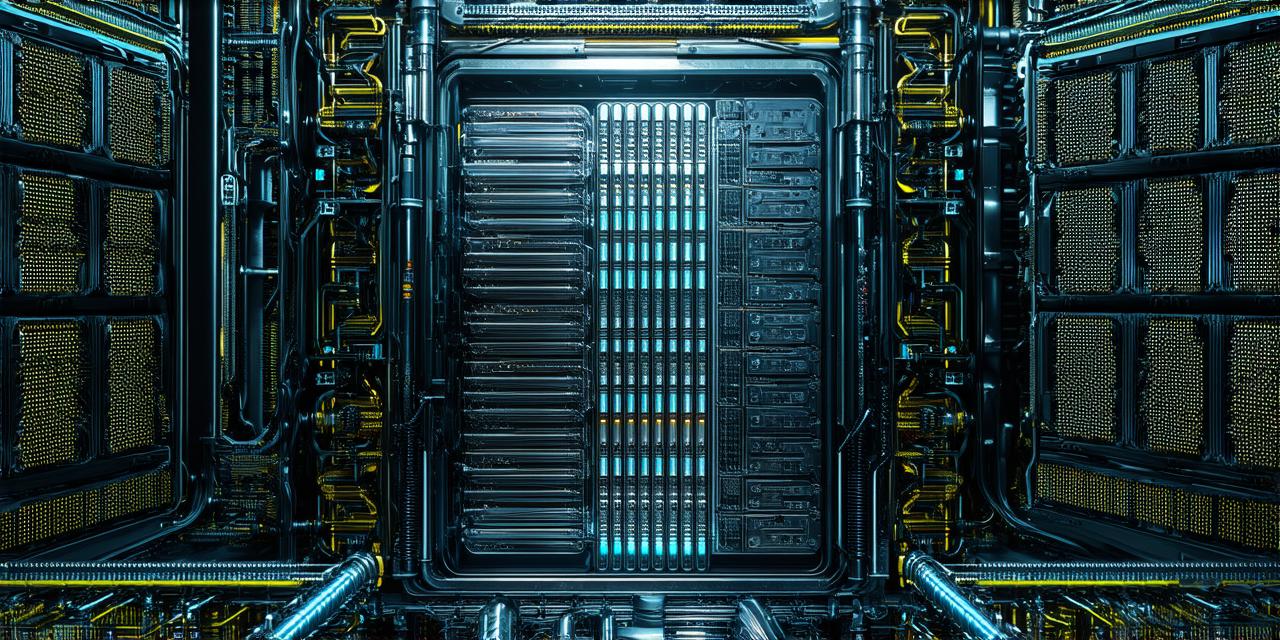Introduction:
Mining cryptocurrency is the process of verifying transactions and creating new blocks in the blockchain. It involves the use of powerful computers that solve complex mathematical problems, which rewards miners with newly minted cryptocurrency as a reward. In this article, we will explore the process of mining cryptocurrency in detail, including its history, different types of cryptocurrency, and how to get started with mining.
History of Cryptocurrency Mining:
The concept of cryptocurrency mining was first introduced by Satoshi Nakamoto, who created Bitcoin, the world’s first decentralized digital currency in 2009. In order to secure the network and prevent double-spending of Bitcoins, Nakamoto designed a system that relies on the work of miners to validate transactions and add them to the blockchain.

Types of Cryptocurrency:
There are thousands of different types of cryptocurrency available today, each with its own unique features and benefits. Some popular cryptocurrencies include Bitcoin, Ethereum, Litecoin, Ripple, and Bitcoin Cash. Each of these cryptocurrencies uses a different consensus algorithm to verify transactions and create new blocks in the blockchain.
Bitcoin, for example, uses the Proof-of-Work (PoW) consensus algorithm, which requires miners to solve complex mathematical problems in order to validate transactions and add them to the blockchain. In contrast, Ethereum uses a hybrid consensus algorithm that combines PoW with Proof-of-Stake (PoS), which allows validators on the network to earn new coins by holding and locking up their tokens as collateral.
How to Get Started with Mining:
To get started with mining cryptocurrency, you will need a computer with a powerful graphics processing unit (GPU) or an application specific integrated circuit (ASIC) designed specifically for cryptocurrency mining. These devices are capable of performing the complex mathematical calculations required to validate transactions and create new blocks in the blockchain.
You will also need access to a cryptocurrency exchange where you can purchase coins to mine, as well as software that allows you to connect to the network and start mining. Some popular cryptocurrency exchanges include Coinbase, Binance, and Kraken.
Before you begin mining, it’s important to do your research and understand the risks involved. Mining cryptocurrency can be a highly profitable venture, but it also requires a significant amount of time, energy, and resources. You will need to be prepared for the potential financial losses and technical challenges that come with mining.
One of the most important factors to consider when getting started with mining is the cost of electricity. Mining cryptocurrency requires a lot of computational power, which consumes a significant amount of electricity. In some cases, the cost of electricity may be higher than the potential rewards from mining, making it unprofitable.
Another factor to consider is the competition in the network. The more miners there are on the network, the harder it will be for you to earn new coins. This is why it’s important to choose a cryptocurrency that has a lower level of competition and a higher potential reward.
How to Choose the Right Cryptocurrency to Mine:
When choosing a cryptocurrency to mine, there are several factors to consider, including the potential reward, the level of competition, and the cost of electricity.
One of the most important factors to consider is the potential reward. This refers to the amount of new coins that can be earned by mining a particular cryptocurrency. Some cryptocurrencies, such as Bitcoin and Ethereum, offer high potential rewards but also require a significant amount of computational power and electricity.
Another factor to consider is the level of competition. The more miners there are on the network, the harder it will be for you to earn new coins. This is why it’s important to choose a cryptocurrency that has a lower level of competition and a higher potential reward. For example, Litecoin and Monero are both popular cryptocurrencies that offer high potential rewards and a lower level of competition compared to Bitcoin and Ethereum.
Finally, the cost of electricity is also an important factor to consider when choosing a cryptocurrency to mine. Some cryptocurrencies, such as Scrypt and X11, are designed to be more energy-efficient and require less computational power than Bitcoin and Ethereum, making them a better choice for miners who want to minimize their electricity costs.
How to Optimize Your Mining Process:
Once you have chosen the right cryptocurrency to mine and set up your mining equipment, there are several ways to optimize your mining process and increase your potential rewards.
One of the most important ways to optimize your mining process is to choose the right mining pool. A mining pool is a group of miners who work together to solve complex mathematical problems and earn new coins as a reward. By joining a mining pool, you can share the computational power and resources of other miners, which can help you earn more coins faster.
Another way to optimize your mining process is to choose the right mining software. There are many different types of mining software available today, each with its own unique features and benefits. Some popular mining software includes Minergate, CudoMiner, and NiceHash.
When choosing mining software
